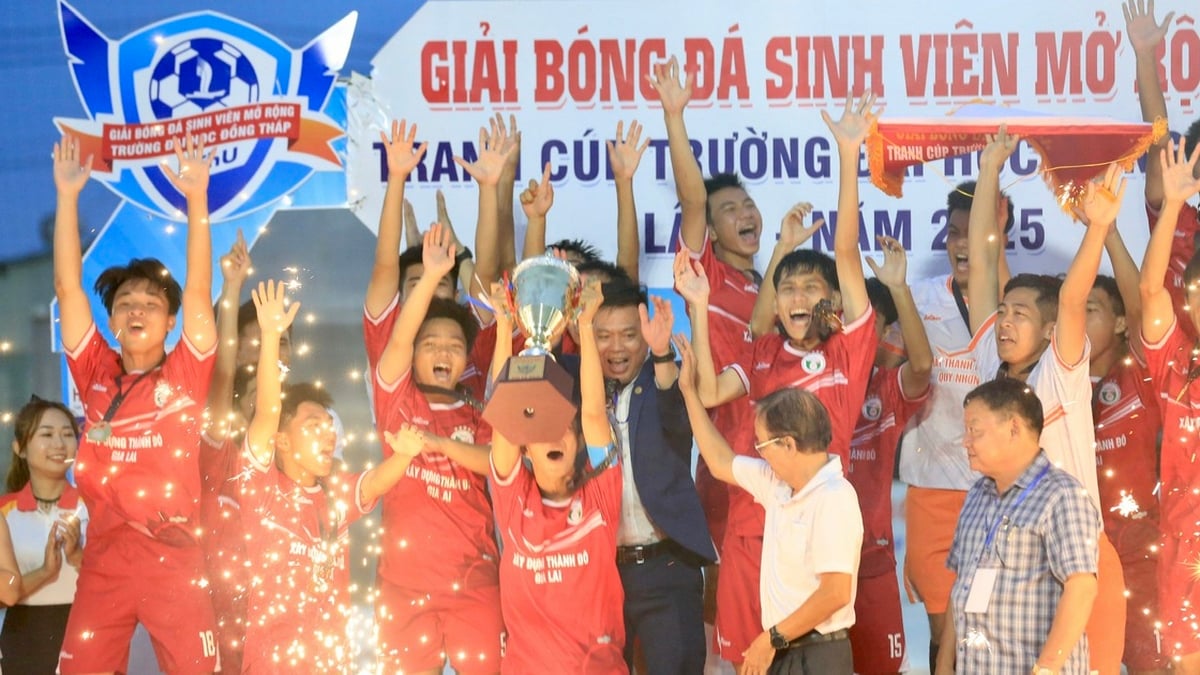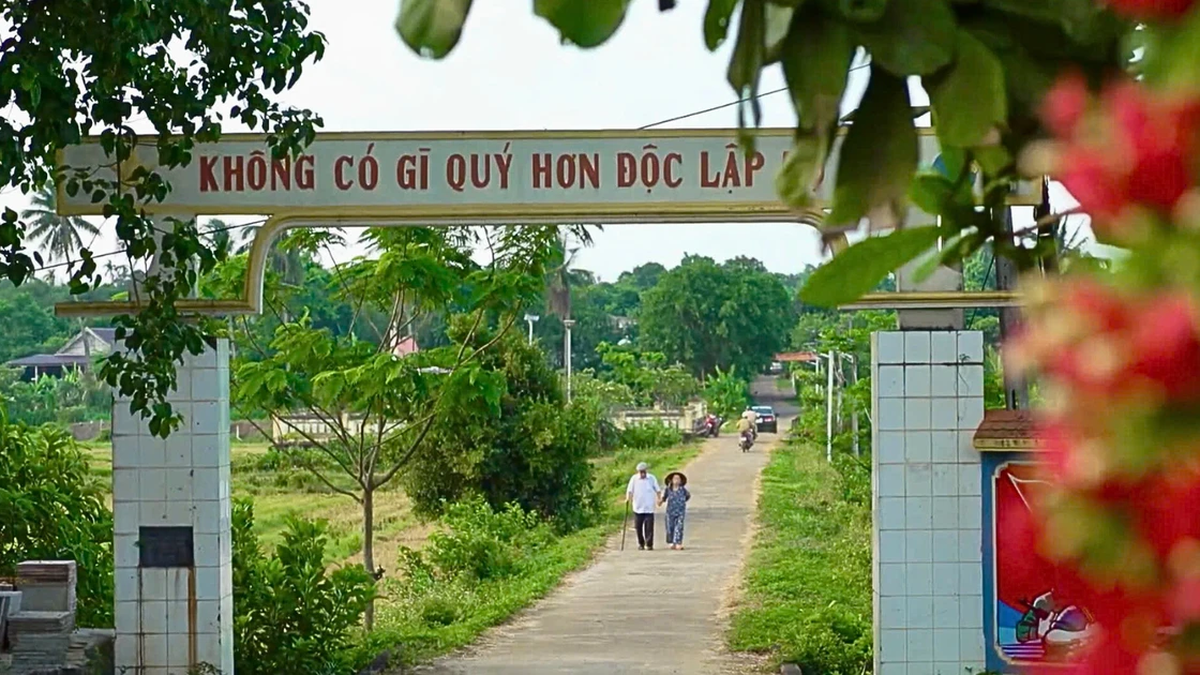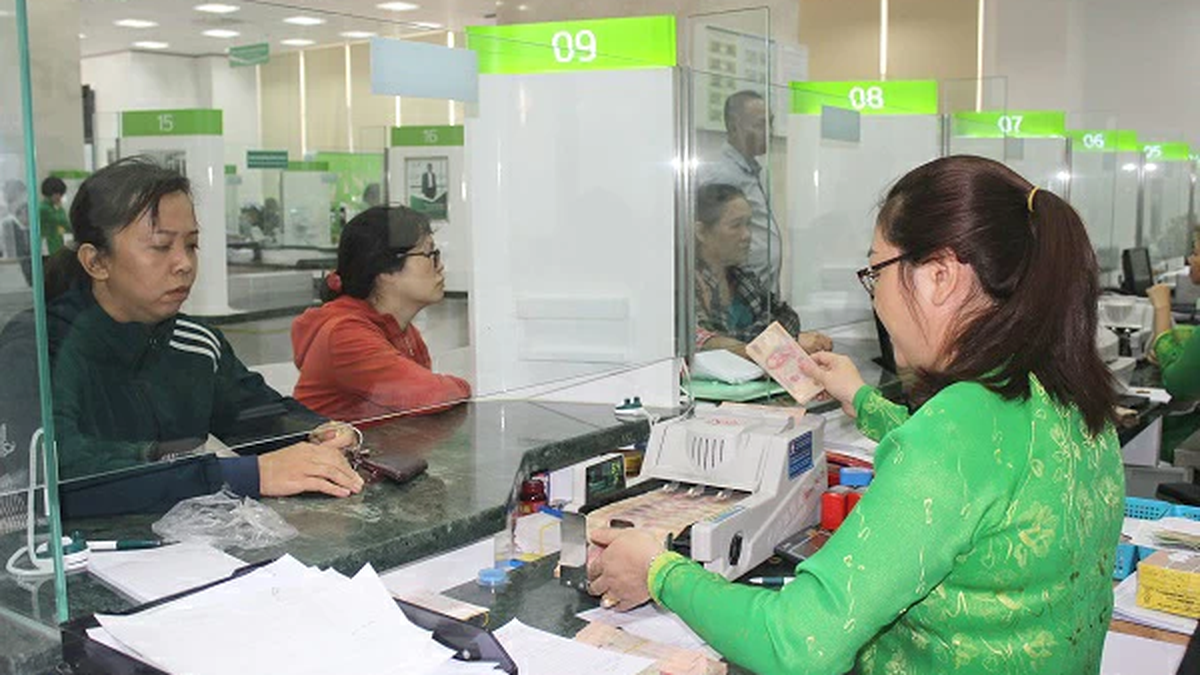The editorial office is the "heart" that determines the quality and reputation of the newspaper.
With more than half a century of formation and development, Nguoi Lao Dong Newspaper not only truthfully reflects the lives, thoughts and aspirations of the people but also actively contributes to the political , economic, cultural and social life of the country.
Pros and cons, good and bad
Before 2015 (August 2011 to be exact), Nguoi Lao Dong Newspaper began operating a modern journalism model - a converged newsroom. However, at this time, the print newspaper was still mainly focused on, in which all content production activities - including morning and afternoon operational meetings - revolved around the print newspaper.

MC number created by Nguoi Lao Dong Newspaper. Photo: VUONG FUONG ANH
Each reporter is assigned to a specific field or area, with the task of collecting information, investigating, interviewing, writing articles and sending them to the editorial office via the internal system or email. The articles are then sent to the editor in charge or the head/deputy of the unit for processing and editing in terms of content, language, legality and politics. Next, the articles are reviewed, selected and arranged by the editorial office in positions on the page according to the available plan; and are only republished on the electronic newspaper without much adjustment or content renewal.
In other words, during this period, the editorial organization was still very traditional, with all the good stuff going to print newspapers first, then online newspapers.
By early 2019, the Lao Dong Newspaper had a fairly basic reorientation in content, following the new motto: Fast - Interesting - Accurate - Responsible - Humane. The entire editorial operation process follows a closed sequence: topic assignment → writing articles → editing → layout → publishing. Printed newspapers and electronic newspapers have been considered "main products", equal, decisive in the image, brand and reliability of the newspaper.
The advantage of this "Multimedia Convergence Newsroom" model is its methodical, solid and professional nature. Every step in the content production chain is carefully controlled, especially with major news stories such as investigations, reports, and critical series - which require a lot of investment in both time and information quality. This is the foundation for building the reputation and identity of Nguoi Lao Dong Newspaper for many years.
However, this model also reveals many limitations in the context of strong digital media development. Slow information processing speed and inflexible content production process make it difficult for e-newspapers to keep up with the fast pace of current events. E-newspapers have not invested properly in unique content, and have not developed multimedia forms such as videos , graphics, livestreams, podcasts, etc. At the same time, the organization of the editorial office in the old way - divided rigidly by expertise and geography - leads to a lack of connection, lack of flexible coordination between departments, and has not formed an integrated multi-platform, multi-channel content production process.
Modern, flexible, integrated
Entering a new development phase since 2020, Nguoi Lao Dong Newspaper has made a drastic transformation from the "Multimedia Convergence Newsroom" model to the "Comprehensive Convergence Newsroom" model and now the "Digital Newsroom" model, operating in an integrated, flexible and multi-platform direction. With a high spirit of determination and continuous innovation in limited financial conditions, Nguoi Lao Dong Newspaper has systematically implemented the digital transformation process, in line with the trend of modern journalism - focusing on readers and content as the core value.
One of the bold and effective steps is the thorough application of the "Paperless Newsroom" model in the entire print newspaper production process. Instead of printing paper copies to approve each article and each page as before, all operations - from proposing topics, writing articles, editing, reviewing, layout to publishing - are performed on software systems and applications. The print newspaper production process is completely digitized, helping to save time, costs and improve information processing efficiency.
Unlike the rigid division model by expertise and area before 2020, the "Comprehensive Convergence Newsroom" is organized in the direction of closely linked content groups and flexible operations according to events and news streams. Groups of reporters, editors and technicians are connected through a common coordination system, ready to coordinate the production of content in many formats (text, photos, videos, infographics, podcasts...) depending on the characteristics of the distribution channel.
The editorial office has also gradually built content teams for digital products and social networks, especially YouTube, TikTok and Facebook, not only to re-share newspaper content but also to create original content suitable for each platform. The spirit of "each reporter is a multimedia content producer" has gradually been formed, helping to improve personal capacity and the competitiveness of press products.
The Lao Dong Newspaper is one of the pioneers in Vietnam in applying artificial intelligence (AI) to support content production and distribution. AI is used in many stages such as user personalization, title suggestions, extracting featured content, SEO optimization, topic suggestions based on search trends, video/clip production for more than 20 social media channels... In addition, AI is also used as the main MC for columns and digital products such as podcasts, AI 365, Audio AI... on online newspapers.
In the period of strong digital transformation, AI is not only a supporting tool but also reshapes the way of doing journalism. The fact that Nguoi Lao Dong Newspaper continuously trains its team of reporters, editors, etc. in AI application skills is not only a technical requirement, but also a manifestation of modern journalism thinking - focusing on readers and leveraging technology. This is the foundation for the newspaper to not only "digitally transform" but also "develop sustainably".
"Don't be afraid of change - dare to try, dare to transform from organization to individual, then you will have a multi-functional - convergent - sensitive editorial team.
Lessons learned
From the practice of digital transformation and editorial organization and operation, Nguoi Lao Dong Newspaper has drawn many valuable lessons. First of all, innovation in journalism thinking is a key factor. The first change must be innovation in thinking among the editorial leadership team, department/office leaders and reporters. All content must answer the question: what do readers need, where do they want to see it, in what form... to shape the editorial organization model. The editorial organization must be flexible, in the direction of multi-functionality - multi-tasking - streamlined - efficiency - digitalization. There cannot be a reporter who only knows how to write but does not know how to take pictures or clips; there cannot be an editor who only knows how to edit sentences and words but does not know how to think about topics and organize topics; there cannot be an editorial secretary who only knows how to create pages, press the publish button but does not know how to use data analysis tools to understand readers...
Besides, traditional experience still plays a fundamental role, but the way of expression needs to be more modern. A long report can be divided into many short clips, a series of investigative articles can be made into a lively e-magazine - these are the minimum skills of a digital newsroom. Data and technology are the foundation for long-term development. The newsroom must have a data strategy: storage, classification, reuse and analysis; must invest in technology tools (CMS, AI, SEO optimization...) to serve the content production process.
The process of digital transformation and modernization of the editorial model of the Lao Dong Newspaper is a continuous flow from traditional journalism experience to comprehensive innovation in the digital age. From operating in a closed, linear process and focusing on print newspapers, the editorial office has shifted to a convergent, digital, multi-platform model with flexible coordination between departments and strong application of new technology. This change not only improves production efficiency, increases the speed of response to current events but also creates diverse, attractive press products that are suitable for the needs of modern readers.
Source: https://nld.com.vn/tu-truyen-thong-den-hien-dai-196250724203523575.htm



































































































Comment (0)